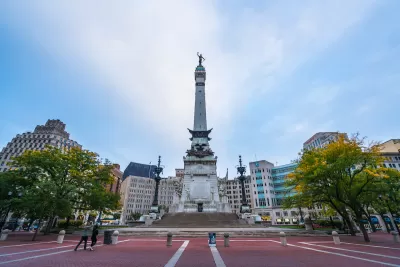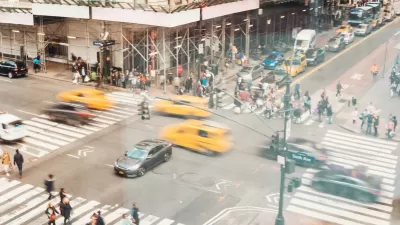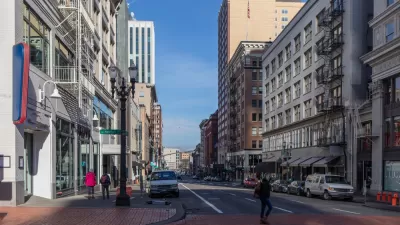As of now, the city lacks a dedicated funding source for pedestrian safety efforts.

Indianapolis could join other cities in developing a Vision Zero plan as part of an effort to stem rising pedestrian deaths, reports Nadia Scharf in the Indianapolis Star.
According to Scharf, “A Vision Zero plan has been on the table for nearly a decade. Now, several city-county council members plan to present a proposal in July and the city has sent out a request for proposals for a study that would examine how a Vision Zero plan could operate in Indy.”
The strategy requires collaboration between various city departments and nonprofits and will likely include infrastructure improvements such as bike lanes, curb extensions, and crosswalks. The proposed Vision Zero bill “will set a timeline goal to see results, create and define an oversight committee to keep efforts on track towards that goal, and set requirements for the first draft of an action plan.”
According to Scharf, Indianapolis faces a disadvantage when it comes to transportation funding: because the state allocates funding based on road miles rather than lanes or vehicle throughput, there is no dedicated funding source for Vision Zero to date. “It’s unclear what changes led by a Vision Zero plan might look like in Indianapolis, but advocates and policymakers alike agree: something needs to change to make Indy streets safer.”
FULL STORY: Indy is in a 'pedestrian safety crisis.' Can a Vision Zero traffic safety plan save lives?

Alabama: Trump Terminates Settlements for Black Communities Harmed By Raw Sewage
Trump deemed the landmark civil rights agreement “illegal DEI and environmental justice policy.”

Planetizen Federal Action Tracker
A weekly monitor of how Trump’s orders and actions are impacting planners and planning in America.

The 120 Year Old Tiny Home Villages That Sheltered San Francisco’s Earthquake Refugees
More than a century ago, San Francisco mobilized to house thousands of residents displaced by the 1906 earthquake. Could their strategy offer a model for the present?

In Both Crashes and Crime, Public Transportation is Far Safer than Driving
Contrary to popular assumptions, public transportation has far lower crash and crime rates than automobile travel. For safer communities, improve and encourage transit travel.

Report: Zoning Reforms Should Complement Nashville’s Ambitious Transit Plan
Without reform, restrictive zoning codes will limit the impact of the city’s planned transit expansion and could exclude some of the residents who depend on transit the most.

Judge Orders Release of Frozen IRA, IIJA Funding
The decision is a victory for environmental groups who charged that freezing funds for critical infrastructure and disaster response programs caused “real and irreparable harm” to communities.
Urban Design for Planners 1: Software Tools
This six-course series explores essential urban design concepts using open source software and equips planners with the tools they need to participate fully in the urban design process.
Planning for Universal Design
Learn the tools for implementing Universal Design in planning regulations.
Clanton & Associates, Inc.
Jessamine County Fiscal Court
Institute for Housing and Urban Development Studies (IHS)
City of Grandview
Harvard GSD Executive Education
Toledo-Lucas County Plan Commissions
Salt Lake City
NYU Wagner Graduate School of Public Service





























